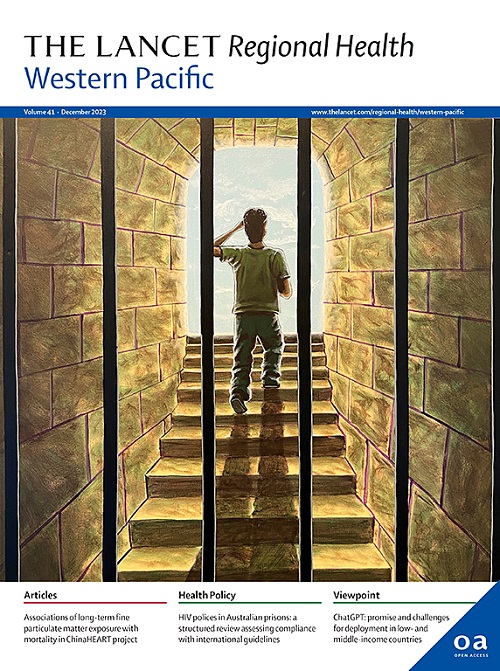Estimated cost-effectiveness of sequential screening for colorectal cancer: evidence from the largest province-wide colorectal cancer screening program in China
IF 7.6
1区 医学
Q1 HEALTH CARE SCIENCES & SERVICES
引用次数: 0
Abstract
Background
Colorectal cancer (CRC) poses a significant public health challenge worldwide. The burden of CRC has rapidly increased in China. Screening has been proven effective in reducing CRC incidence and mortality. However, China faces challenges with insufficient screening coverage and limited cost-effectiveness evidence for sequential screening strategies. This study aims to evaluate the effectiveness and cost-effectiveness of a large-scale, population-based sequential screening program for CRC, leveraging a pioneering effort to expand screening coverage.
Methods
Based on a population-based, provincial-wide CRC program in Zhejiang (PCCSP), this study was conducted from January 2020 to December 2023. Free sequential screening services are offered to residents aged 50-74, using the “Revised Optimized Asia-Pacific Colorectal Screening (APCS) Score” combined with fecal immunochemical testing (FIT)(RF-FIT strategy). Individuals are classified as screening-positive if they are high-risk based on APCS or had positive FIT results, and those screening-positive are referred for colonoscopy. The outcomes included colonoscopy participation rates, costs and yield (detection rate, colonoscopies to detect one lesion, and yield per 10,000 invitees). For economic evaluation, a Markov model was constructed from a healthcare system perspective to assess six screening strategies with different frequencies (once per lifetime, every 10 years, 5 years, 3 years, 2 years, and every year) and initial screening at different ages. A closed cohort of 100,000 participants was assumed to enter the model. Cost-effectiveness was measured by calculating the incremental cost-effectiveness ratio (ICER), with the willingness-to-pay threshold set at 3 times the per capita GDP in Zhejiang (US $52,964). Univariate and probabilistic sensitivity analyses were performed to evaluate the robustness of model findings.
Findings
A total of 8,152,854 eligible participants were consecutively enrolled in the PCCSP, with 1,319,217 (16.18%) identified as high-risk and invited for colonoscopy. The coloscopy participation rate was 32.16%. 47,540 AAs and 4572 CRCs were detected. Colonoscopies to detect one advanced adenoma (AA) and CRC were 25 and 286, respectively. Screening yield per 10,000 invitees were 181 AAs and 17 CRCs, respectively. The cost per AA and CRC detected was $1594 and $16,572, respectively. All screening strategies improved effectiveness, adding 1940 to 15,824 quality-adjusted life-years (QALYs) and increasing costs by $252 to $21,561 compared with no screening over a lifetime, leading to ICERs of $112 to $2113 per QALY. More frequent screening was associated with an increase in QALYs and costs; ICERs for higher frequency screening compared with the next-lower frequency screening were between $112 and $3618 per QALY. Annual screening using the RF-FIT strategy would be the most cost-effective strategy at each initial screening age, especially for ages 45-49, yielding the most incremental QALYs (15,824). The results were the most sensitive to utility, colonoscopy participation rate and transition probabilities of CRC-related health states.
Interpretation
The findings suggest that provincial-wide colorectal cancer screening based on sequential RF-FIF strategy may be cost-effective in resource-rich regions of China; screening every year would be the optimal strategy. This study provides high-quality evidence to support the expansion of screening coverage and guide policy decision-making for the prevention and control of colorectal cancer in China.
求助全文
约1分钟内获得全文
求助全文
来源期刊

The Lancet Regional Health: Western Pacific
Medicine-Pediatrics, Perinatology and Child Health
CiteScore
8.80
自引率
2.80%
发文量
305
审稿时长
11 weeks
期刊介绍:
The Lancet Regional Health – Western Pacific, a gold open access journal, is an integral part of The Lancet's global initiative advocating for healthcare quality and access worldwide. It aims to advance clinical practice and health policy in the Western Pacific region, contributing to enhanced health outcomes. The journal publishes high-quality original research shedding light on clinical practice and health policy in the region. It also includes reviews, commentaries, and opinion pieces covering diverse regional health topics, such as infectious diseases, non-communicable diseases, child and adolescent health, maternal and reproductive health, aging health, mental health, the health workforce and systems, and health policy.
 求助内容:
求助内容: 应助结果提醒方式:
应助结果提醒方式:


